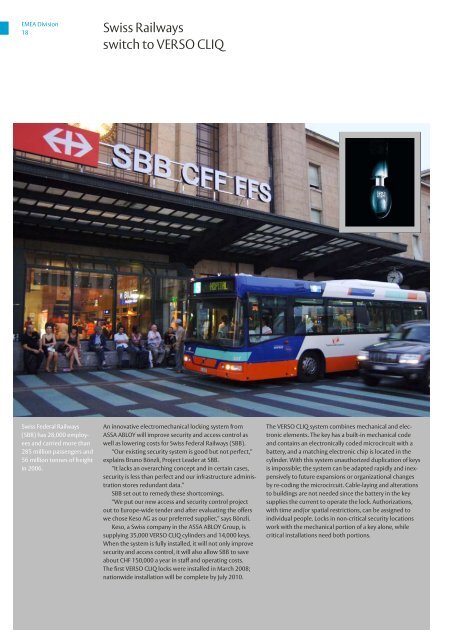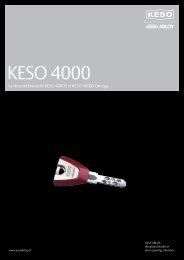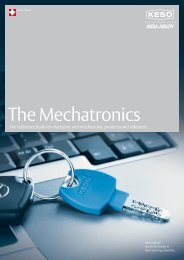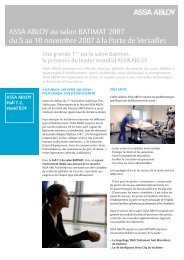Create successful ePaper yourself
Turn your PDF publications into a flip-book with our unique Google optimized e-Paper software.
EMEA Division<br />
18<br />
Swiss Federal Railways<br />
(SBB) has 28,000 employees<br />
and carried more than<br />
285 million passengers and<br />
56 million tonnes of freight<br />
in 2006.<br />
Swiss Railways<br />
switch to VERSO CLIQ<br />
An innovative electromechanical locking system from<br />
ASSA ABLOY will improve security and access control as<br />
well as lowering costs for Swiss Federal Railways (SBB).<br />
“Our existing security system is good but not perfect,”<br />
explains Bruno Bönzli, Project Leader at SBB.<br />
“It lacks an overarching concept and in certain cases,<br />
security is less than perfect and our infrastructure administration<br />
stores redundant data.”<br />
SBB set out to remedy these shortcomings.<br />
“We put our new access and security control project<br />
out to Europe-wide tender and after evaluating the offers<br />
we chose Keso AG as our preferred supplier,” says Bönzli.<br />
Keso, a Swiss company in the ASSA ABLOY Group, is<br />
supplying 35,000 VERSO CLIQ cylinders and 14,000 keys.<br />
When the system is fully installed, it will not only improve<br />
security and access control, it will also allow SBB to save<br />
about CHF 150,000 a year in staff and operating costs.<br />
The first VERSO CLIQ locks were installed in March 2008;<br />
nationwide installation will be complete by July 2010.<br />
The VERSO CLIQ system combines mechanical and electronic<br />
elements. The key has a built-in mechanical code<br />
and contains an electronically coded microcircuit with a<br />
battery, and a matching electronic chip is located in the<br />
cylinder. With this system unauthorized duplication of keys<br />
is impossible; the system can be adapted rapidly and inexpensively<br />
to future expansions or organizational changes<br />
by re-coding the microcircuit. Cable-laying and alterations<br />
to buildings are not needed since the battery in the key<br />
supplies the current to operate the lock. Authorizations,<br />
with time and/or spatial restrictions, can be assigned to<br />
individual people. Locks in non-critical security locations<br />
work with the mechanical portion of a key alone, while<br />
critical installations need both portions.
















